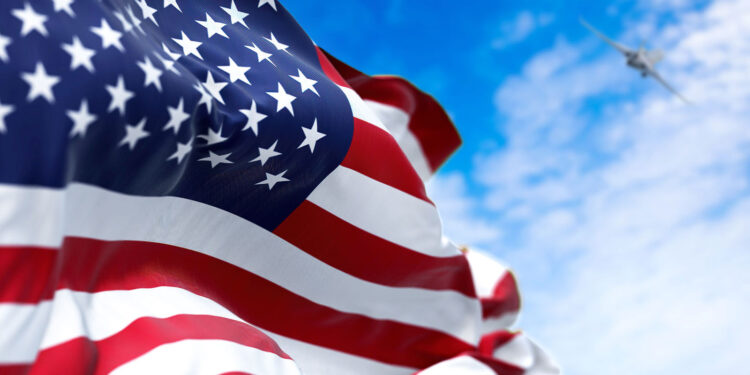Private Jet Ops to the U.S.: Part 1 – Documentation Requirements

This is part one of a two-part article series focusing on non-U.S.-registered aircraft traveling to the U.S.
A number of documentation and procedural requirements are essential to keep in mind when operating a business aircraft to the U.S. Mistakes in this area can lead to fines, delays, detention, and/or restrictions on future travel arrangements. It’s always best to double-check and confirm all applicable requirements with your 3rd-party provider and ground handler pre-trip.
The following is an overview on documentation that you need to know:
1. Ensure that all onboard have appropriate visas
All crew members and passengers need visas to enter the U.S. unless they’re U.S. nationals, permanent resident Green Card holders, or Canadian citizens traveling for non-business purposes. You must have a passport with validity for the entire length of your stay, and U.S. permanent residents must have their Green Cards with them. Should a passenger or crew member arrive in the U.S. – even for an international tech stop – without an appropriate visa, U.S. Customs can fine the operator, the individual without the visa, and/or any service provider who has assisted with the customs arrangements. Note that visas are not available on arrival in the U.S.
2. The VWP is an option for some foreign nationals
The Visa Waiver Program (VWP) allows registered nationals of certain countries to enter the U.S. without a visa. The key here is to ensure that all eligible passengers have an Electronic System for Travel Authorization (ESTA) and that the aircraft operator is registered under the VWP. It’s important to note that VWP is not applicable to crew members. Active crew members must secure required visas prior to operating to the U.S. For more information regarding the VWP, please read these VWP articles on our blog.
3. TSA waivers may be required
TSA waivers may be needed for certain non-U.S. registered aircraft – depending on the flight schedule and where the aircraft is registered. If a TSA waiver is required, all crew members, passengers, and destinations must be approved on the waiver. You may also need a TSA waiver for overflight of U.S. airspace, so it’s important to check all applicable requirements with your 3rd-party provider in advance.
4. APIS must be submitted
Customs, Immigration, and Quarantine (CIQ) must always be cleared on first arrival into the U.S., from an international location, and Advanced Passenger Information System (APIS) will need to be submitted prior to arrival/departure. To comply with APIS, full crew/passenger information must be electronically submitted via a secured system. Note that information submitted must be exactly the same as it appears on the passport. Once the information is submitted, you’ll receive an acknowledgement, but not a confirmation. For more information on APIS requirements for private non-revenue and charter (non-scheduled commercial) flights, please see our article entitled “APIS, TSA, and DOT Authorization for Non-US-Registered Business Aircraft.”
5. A BOE may be needed
When operating to the U.S. from beneath the 30th parallel, operators must normally stop and clear CIQ at an approved/designated Airport of Entry (AOE) close to the border. However, if you have a Border Overflight Exemption (BOE), you’re able to bypass designated AOEs and proceed to your destination, assuming that it’s an AOE and prior customs arrangements have been made. BOE validity can be for one single trip or on an annual basis. Note that BOE regulations have changed and now allow greater flexibility for operators. For more information on BOE updates, please see our article entitled “UPDATE: Border Overflight Exemptions – Positive Impacts From Recent Changes.”
6. Charter operators have special requirements
Charter operators need to accomplish customs clearance on both arrival and departure, whereas inbound customs clearance is only needed for private non-revenue operations. Charter operators must also obtain a “permit to proceed” to the next destination (from one port to the next for all U.S. travel), and this is obtained during customs clearance. A customs bond is required for charter operations to the U.S. This bond is to ensure payment of any fines from CBP that may be levied. In some instances you may be able to use a 3rd-party custom bond; however, certain airports will not permit this. For this reason it’s recommended that operators obtain their own customs bonds.
Conclusion
Documentation errors occur with some frequency in international operations to the U.S., but these issues are avoidable. Ensure that all applicable permits and notifications have been considered, and be particularly diligent in terms of visa requirements for all onboard. Even though this is incorrect, there are still operators who believe that crew visas may be obtained on arrival and that ESTA holders may arrive in the U.S. aboard any corporate aircraft.
Later, we’ll discuss procedural considerations for non-U.S.-registered aircraft traveling to the U.S.
Questions?
If you have any questions about this article or would like more information on non-U.S. registered aircraft traveling to the U.S., contact me at greglinton@univ-wea.com.




